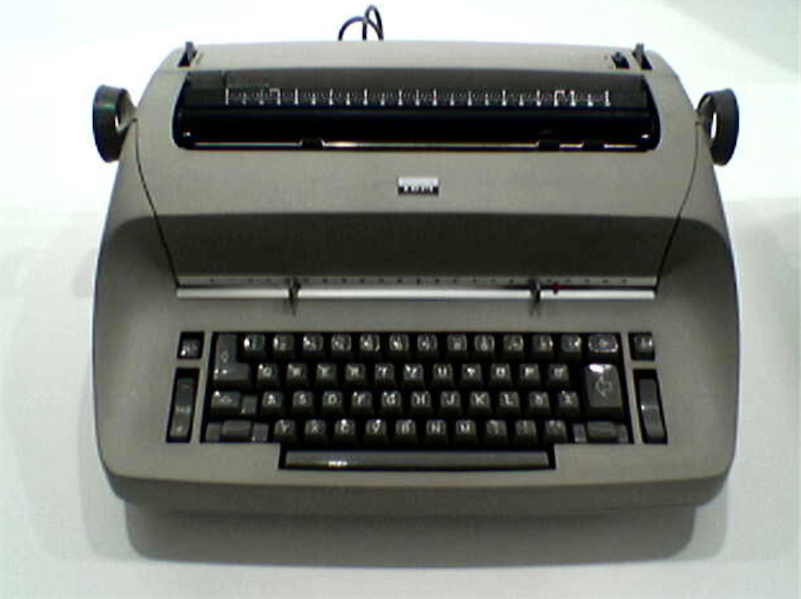By Boing Boing
In the 1970s, the Soviets managed to intercept top secret communications in the U.S. embassy in Moscow and nobody could figure out how.
While an antenna was eventually found hidden in the embassy’s chimney, it took years to determine how what data was being collected for transmission and how.
As a last resort, all equipment at the embassy was shipped back to the U.S. for analysis.
From IEEE’s Spectrum:
After tens of thousands of fruitless X-rays, a technician noticed a small coil of wire inside the on/off switch of an IBM Selectric typewriter. (NSA engineer Charles) Gandy believed that this coil was acting as a step-down transformer to supply lower-voltage power to something within the typewriter. Eventually he uncovered a series of modifications that had been concealed so expertly that they had previously defied detection.
A solid aluminum bar, part of the structural support of the typewriter, had been replaced with one that looked identical but was hollow. Inside the cavity was a circuit board and six magnetometers. The magnetometers sensed movements of tiny magnets that had been embedded in the transposers that moved the typing “golf ball” into position for striking a given letter.
Other components of the typewriters, such as springs and screws, had been repurposed to deliver power to the hidden circuits and to act as antennas. Keystroke information was stored and sent in encrypted burst transmissions that hopped across multiple frequencies.
For more on this fascinating story, check out former intelligence officer and technologist Eric Haseltine’s new book The Spy in Moscow Station.
–
From the publisher:
In the late 1970s, the National Security Agency still did not officially exist – those in the know referred to it dryly as the No Such Agency. So why, when NSA engineer Charles Gandy filed for a visa to visit Moscow, did the Russian Foreign Ministry assert with confidence that he was a spy?
Outsmarting honey traps and encroaching deep enough into enemy territory to perform complicated technical investigations, Gandy accomplished his mission in Russia, but discovered more than State and CIA wanted him to know.
Eric Haseltine’s The Spy in Moscow Station tells of a time when – much like today – Russian spycraft had proven itself far beyond the best technology the U.S. had to offer. The perils of American arrogance mixed with bureaucratic infighting left the country unspeakably vulnerable to ultra-sophisticated Russian electronic surveillance and espionage.
This is the true story of unorthodox, underdog intelligence officers who fought an uphill battle against their own government to prove that the KGB had pulled off the most devastating penetration of U.S. national security in history. If you think The Americans isn’t riveting enough, you’ll love this toe-curling nonfiction thriller.
–
An IBM Selectric.
 Oliver Kurmis (CC BY 2.5)
Oliver Kurmis (CC BY 2.5)
–
Haseltine at the Book Soup Bookstore in Los Angeles last May, via C-SPAN.
–
“Wall, give me back my bike!”
From The Spy in Moscow Station by Eric Haseltine. pic.twitter.com/y4duOq7Ja1
— Thomas Cleveland (@tcleveland4real) July 31, 2019
–
Author of The Spy in Moscow Station and former US spy technology chief, Eric Haseltine, warns us how we need to learn from the Cold War in preparing against modern threats in @theipaper – ‘We’re playing checkers, and our opponent is playing chess’ https://t.co/JWt3VY8l8d
— Icon Books (@iconbooks) June 25, 2019
–
Our latest #Podcast is available now. On this episode, we are joined by Eric Haseltine to discuss his book “The Spy In Moscow Station”. Now available on your preferred podcast apps, or here via our Soundcloud: https://t.co/lFr37qpjBk pic.twitter.com/z6r1XxMFtO
— TheDryCleanerCast Spies | Terrorism | GeoPolitics (@DryCleanerCast) December 22, 2019
–
Haseltine on security at a New Yorker conference five years ago.
–
Eric Haseltine, executive vice prez of research & development at Walt Disney Imagineering left to become associate director for research at the NSA & then became National Intelligence Director John Negroponte’s assistant director for science & technology. https://t.co/sKH5m3KuXY
— Bluedreamer (@Bluedre72692262) November 27, 2019
–
Having been an entertainment executive and a spy, I must tell you: never bet against evil. – Eric Haseltine
— John Perry Barlow (@JPBarlow) February 21, 2013
Posted on January 1, 2020


